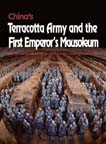China’s Terracotta Army and the First Emperor’s Mausoleum
$23.96
In stock
Description
China’s Terracotta Army and the First Emperor’s Mausoleum
Author: Yuan Zhongyi
Order No. 1072
ISBN-13: 9781931907682
ISBN-10: 1931907684
Binding: Paperback
Publisher: Homa & Sekey Books
Pub Year: 2011
Language: English
Size: 7.25 x 10
Page: 152
Price: $29.95. You pay only $23.96 (after 20% discount).
Xi’an, where the Silk Road in ancient China began and where the kings of thirteen dynasties throned, drew the attention of the world in 1974 with the discovery of the First Emperor’s Mausoleum and a legion of accompanying burial pits.
The First Emperor (259–210 BC), as the name suggests, was the first emperor in the history of China. He annihilated six other states and founded China’s first unified and centralized powerful empire—the Qin dynasty. During his reign, the world-famous Great Wall was built. He died at the age of fifty, on a journey to seek medicine for longevity.
This book introduces the accompanying burial pits of the First Emperor’s Mausoleum, focusing on the excavation process and details of the terracotta warriors and horses in the pits. Readers will learn fascinating facts about the Qin army of more than two thousand years ago and get answers to many intriguing questions such as: Who discovered the terracotta army sites and whose decision it was to excavate them? How were the terracotta warriors lined up and how the military arrays were deployed? How did the infantry, cavalry and chariots coordinate in operation? What was the armament like? The book also discusses the elaborate art and techniques of making terracotta warriors and horses. Through the author’s narrative reconstruction of the valiant and luxury life of the First Emperor, readers will get acquainted with the intricacies of the ancient Chinese civilization.
Yuan Zhongyi was the director of the Museum of Qin Shihuang’s Terracotta Army from 1988-1998. He graduated from East China Normal University in 1963, majoring in the History of Ancient China, and has been engaged in archeological excavation and research in Xi’an thereafter. As the team leader, he led and participated in the excavation of the terracotta army Pits 1, 2 and 3 and has dedicated himself to the archeological prospecting, excavation and research of the First Emperor’s Mausoleum and the terracotta army pits all along. He has published several academic works on the discovery and research of the terracotta army as well as on aspects of the Qin scripts.
Additional information
| Weight | 1 lbs |
|---|






